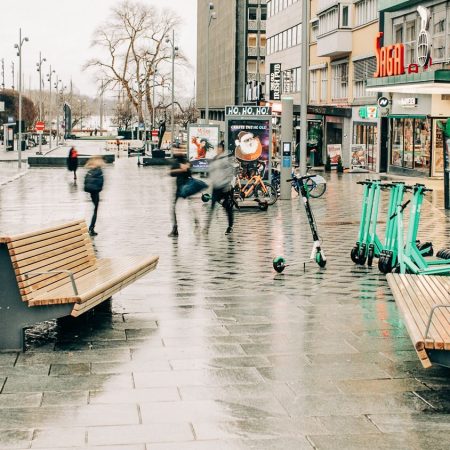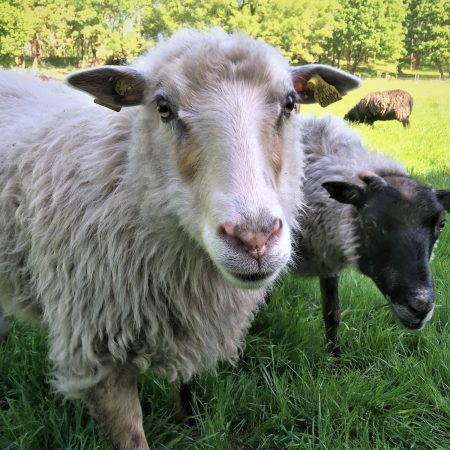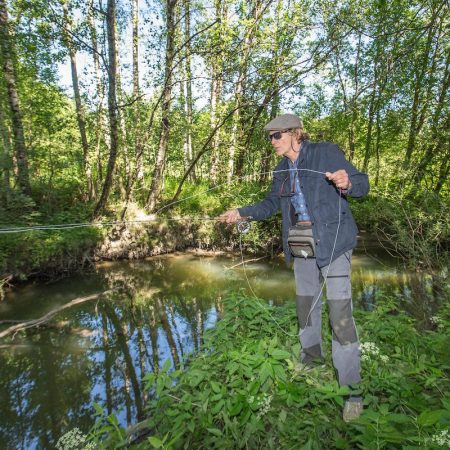Size: large
Type: image
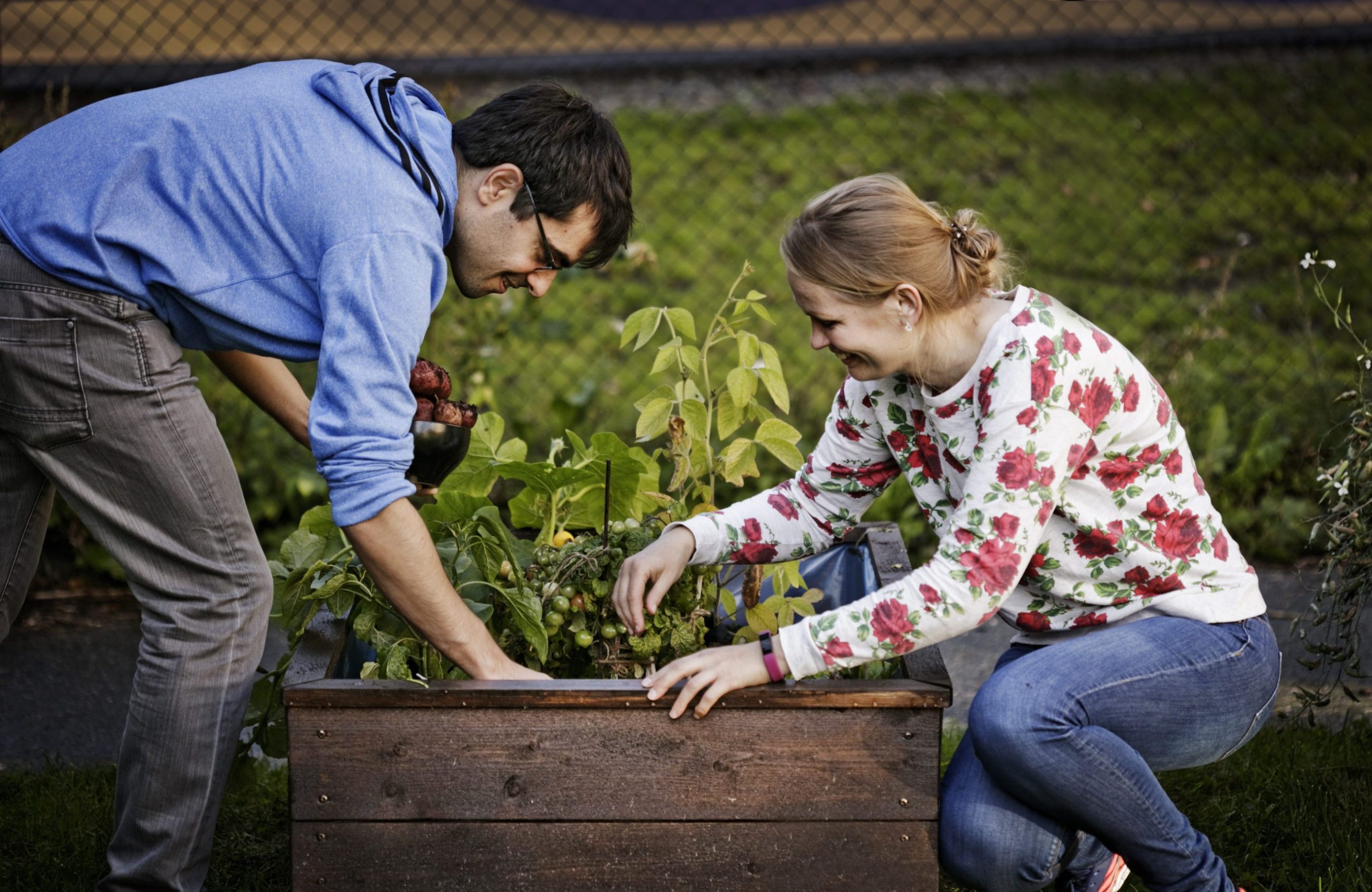
The local council in Oslo’s Sagene district has put 61 plant containers at 11 sites around the district. Each container is adopted by people living nearby, who can use it to grow organic vegetables and flowers for their own use.
– We’ve had very successful harvests of cucumbers, tomatoes, red peppers, beetroots, salad leaves, spring onions, radishes and potatoes. One or two things have been stolen, but otherwise the container has been left in peace. That’s pretty amazing, considering it’s in a park and completely unprotected, says Hadrien Copponnex. Both he and Ginta Šolyté work as IT engineers.
– We sit in front of our computer screens all day, and it’s good to come here in the evening and potter around with our container. We feel that we have some contact with nature, even though we live in an inner-city apartment, says Ginta.
– Coming here clears our heads. We live just a few hundred metres away, and often stroll over here after work, says Hadrian.
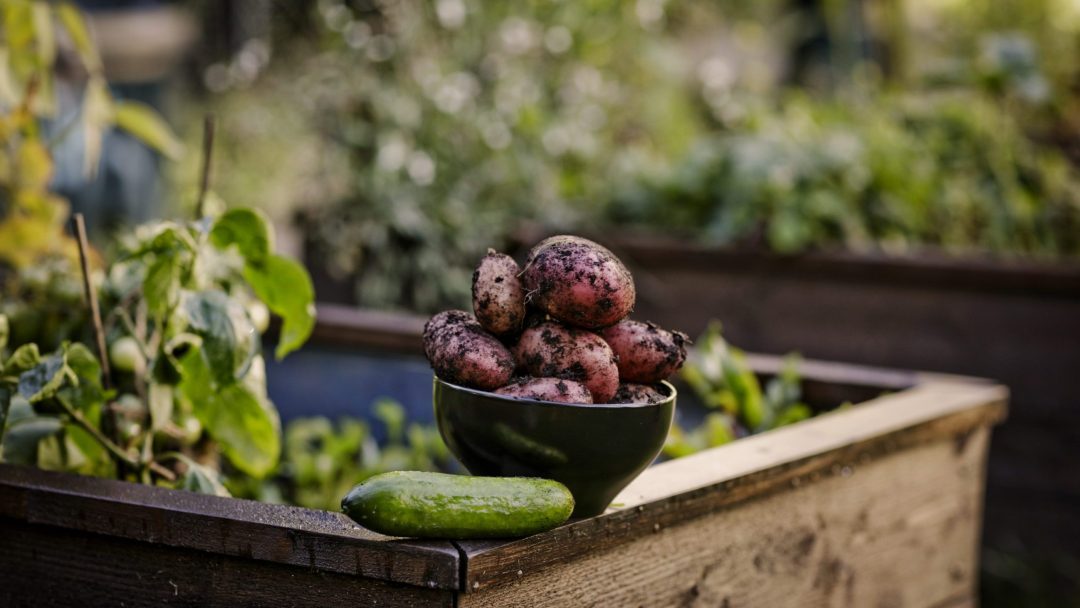
The plant containers at Sagene have produced cucumbers, tomatoes, red peppers, beetroots, salad leaves, spring onions, radishes and potatoes.
Food growing for all
The local council installed Sagene’s first plant containers in 2014, and since then the number has increased year on year.
– We wanted to start this project to find out whether growing produce in public open spaces could work. Sagene is a densely populated district, and a lot of people live in small apartments without access to their own garden or even a balcony. We wanted to give people living in Sagene an opportunity to grow their own food, and also to create cross-cultural and cross-generational meeting places, explains Helene Lo Cascio Sætre, who is an environmental consultant for Sagene local council.
The local council provides the containers and compost. Anyone can apply to adopt a container, with people who live within 500 metres of a site getting priority.
- Please also read: This family wants a car-free life in Oslo
– People can grow what they like, as long as it’s completely organic. They have sole responsibility for watering, weeding and generally taking care of their containers, she says.
The containers are made by a local carpentry workshop, Grünerløkka Snekkerverksted, and the project has received funding from the County Governor of Oslo and Akershus, and the Savings Bank Foundation DNB.
– Urban food growing has so many advantages: better health, greater awareness about food production and, from an environmental perspective, the project can be linked to reducing energy consumption, greenhouse gas emissions, pesticide use, and the water consumption linked to industrial food production. It also helps improve air quality, boosts biodiversity, reduces noise, and helps us to adapt to climate change, through increased rainwater retention, says Sætre.
There are so many potatoes here that I think we’ll invite our neighbours over to supper.
Sharing seeds with friends
Ginta and Hadrien say that they have become friends with the other people who have adopted containers in Lilleborg Church Park.
– We all volunteered to help when the containers and compost were delivered, and since then we’ve set up our own Facebook group where we can ask for help with watering if we’re going to be away, or let people know that we’ve got spare seeds, for example. It’s sociable and enjoyable, says Ginta, as she pulls up yet another large potato.
– There are so many potatoes here that I think we’ll invite our neighbours over to supper, she says enthusiastically.
– Perhaps we could make tartiflette, says Hadrian.
– It’s a speciality from the French Alps, where I come from. The ingredients are potatoes, onions, lardons and reblochon cheese. It’s really good.
The couple got their first container last year. Ginta sent in an application after seeing a district council poster in a local flower shop.
– We’ve been testing things out and have really enjoyed finding out what vegetables we can grow. We’ve had the most success with salad leaves and potatoes, she says.
– I didn’t have any experience at all with growing food until now, but I got really keen once we got our own container. It’s absolutely worth the time we put in, says Hadrien.
- The City of Oslo has developed and adopted the Oslo Climate and Energy Strategy, which is in accordance with the Paris Agreement.
- The target is to reduce the city’s CO2 emissions by 95 per cent by 2030, compared to the 1990 level.
- The strategy is backed up by an annual Climate Budget, integrated in the city’s annual financial budget.
Read more reports and documents on Oslo’s climate action here! (english)
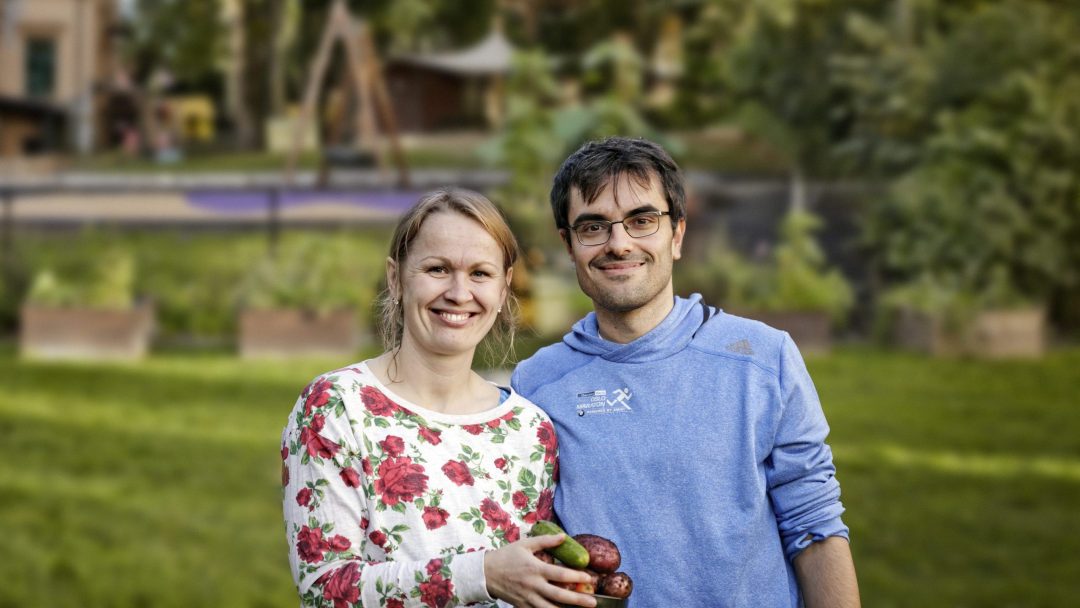
Ginta Šolyté and Hadrien Copponnex recommend other city dwellers who don’t have gardens to follow their example.
Food you’ve grown yourself tastes best
Oskar Braaten Kindergarten is right opposite Lilleborg Church Park, and the children keep close track of the plants growing in the containers.
– We feel a little extra responsibility to take good care of our container, since we know that the children are following our progress. Urban food growing is getting bigger and bigger, I know of several similar projects in other districts. It’s fun that city dwellers like us can also have the chance to grow our own vegetables, despite not having our own garden, says Ginta, who has gained a new perspective on shop-bought vegetables since she began to grow her own produce.
– I’ve got a much better understanding of how long it takes for vegetables to be ready to harvest. In our urban existence, perhaps we’ve forgotten to some extent how much effort it takes, as it’s so easy to pick up what one needs in a shop, she says.
– And vegetables taste so much better when you’ve grown them yourself! adds Hadrien.
Would you like to apply to adopt a food-growing container?
Click here for information about how to apply!
- You might also want to read: Introducing Oslo’s first “anti-plastics warrior”
This story was originally published in Norwegian in September, 2017.
